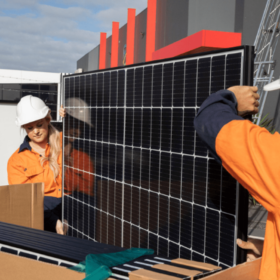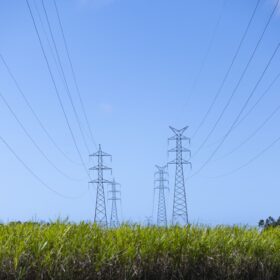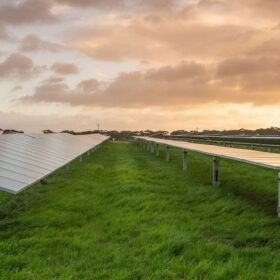The final rules and associated final determinations have been made in response to two rule change requests from the Commonwealth Minister for Climate Change and Energy, Chris Bowen, and a rule change request from Energy Networks Australia (ENA).
The Australian Energy Market Commission (AEMC) sets the rules for the National Electricity Market (NEM) and provides independent expert energy advice to Australia’s State and Federal Governments. It is strongly focused on ensuring the regulatory framework strikes the right balance between getting transmission built quickly and affordable electricity prices, particularly in light of current cost of living concerns.
An essential part of this work relates to the financing of new transmission and distribution projects needed for the transformation, including through government schemes such as the Commonwealth Government’s Rewiring the Nation Fund, in order to drive timely delivery at the lowest possible cost for consumers.
Sharing concessional finance benefits with consumers (‘concessional finance’)
The AEMC today made a final rule change on concessional finance that will allow the benefits of concessional finance for transmission and distribution projects provided by government funding bodies, such as the Commonwealth Government’s Rewiring the Nation Fund, to be passed back to consumers in the form of lower network charges when intended, either now or in the future.
The Commonwealth Government’s Rewiring the Nation Fund commits 20 billion dollars to modernise our electricity grid and infrastructure. This low cost finance is intended to support efficient investment in, and timely delivery of, critical transmission infrastructure, to minimise costs to consumers.
Currently, there is no mechanism by which the benefits of concessional finance can be passed on to consumers in the form of lower prices.
AEMC Chair Anna Collyer says that under our rule, the benefits of government funding could now be shared between the network business and consumers.
“It is in everyone’s best interests – from consumers to network service providers to governments, to have a clear and predictable process for concessional financing benefits, to facilitate lower prices for consumers when intended, and to support the sector in the build out of major transmission projects,” she said.
Accommodating financeability in the regulatory framework (‘financeability’)
Our second final rule change on ‘financeability’ seeks to address the challenges network service providers may have in securing efficient funding for major projects, in accordance with the needs of the transition.
The final rule amends the National Electricity Rules to improve the ability of transmission network service providers (TNSP’s) to efficiently finance the timely delivery of major projects.
The change will empower the Australian Energy Regulator to modify the timing of depreciation to manage cash flows when required. This will deliver benefits to consumers in the short and long-term, without providing additional revenue to TNSPs in real terms over the life of the assets.
It will also facilitate timely investment in transmission that the Integrated System Plan (ISP) has determined as necessary to support emissions reduction, security, and reliability. Delayed investment in transmission would come at a cost to consumers.
AEMC Chair Anna Collyer said both changes should provide investors and consumers with confidence that the right investments can be delivered at the right time.
“When it comes to transmission, it is critical we strike a balance between getting the right investment to achieve net zero and facilitating a reliable and secure future energy system, with delivering major projects at the right time and as cost-effectively as possible to ensure the best outcomes for consumers,” she said.
“Our rule will provide transmission businesses and investors with greater certainty to develop projects in a timely way, so that the system can keep up with the pace of the transition and customers can enjoy reliable and secure power at the lowest possible price,” she said.






By submitting this form you agree to pv magazine using your data for the purposes of publishing your comment.
Your personal data will only be disclosed or otherwise transmitted to third parties for the purposes of spam filtering or if this is necessary for technical maintenance of the website. Any other transfer to third parties will not take place unless this is justified on the basis of applicable data protection regulations or if pv magazine is legally obliged to do so.
You may revoke this consent at any time with effect for the future, in which case your personal data will be deleted immediately. Otherwise, your data will be deleted if pv magazine has processed your request or the purpose of data storage is fulfilled.
Further information on data privacy can be found in our Data Protection Policy.